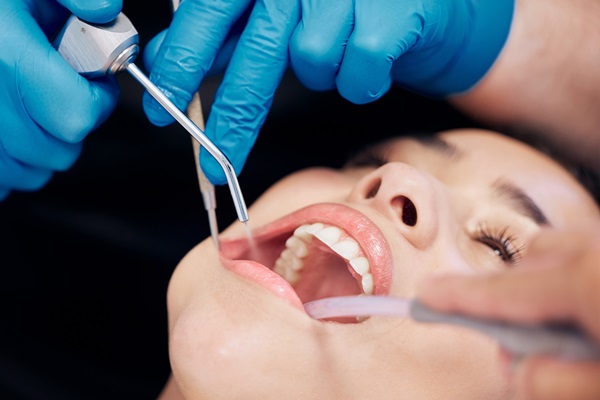When a Deep Teeth Cleaning is Recommended for Periodontal Health

Going to the dental office regularly likely means that the teeth will be cleaned on a routine basis, however, this does not mean that a deep teeth cleaning will be done. A deep teeth cleaning is actually different than the routine one that is done at a check-up. Many patients initially believe that a deep cleaning is required if they have not been to the dentist in awhile or if oral hygiene is not practiced. The need for a deep cleaning depends on one's existing oral health.
When to consider a deep cleaning
The upper portion of the teeth is covered with a thick protective coating called enamel. The lower parts of the teeth do not have the same level of protection because the gums and bone generally cover them. However, periodontal disease can attack and irritate the gums at the base of the teeth. Unfortunately, periodontal disease often results in gums that pull back or recede down the teeth. This exposes a weaker part of a tooth for potential infection or damage.
As the gums pull away from the teeth, they create small pockets. As the periodontal disease continues or progresses, the pockets can grow in size. This means that more of the tooth is exposed, and more harmful bacteria can hide in these pockets.
Untreated, periodontal disease can lead to deep gum recession or even bone loss. If the issue becomes too severe, the dentist may suggest a tooth extraction, or the teeth may become loose and fall out independently.
While brushing and flossing can help keep periodontal disease from getting established, a deep teeth cleaning is required once the pockets have been created.
Dentists use a two-part approach to deep cleaning. These are called scaling and root planing.
The scaling portion of the procedure occurs when the dental staff clean away all of the plaque and tartar that has accumulated at the base of the tooth and down into the pocket. While brushing can help to reduce the amount of plaque, tartar has hardened to the tooth and requires professional intervention.
After the teeth and pockets have all been scaled, the hygienist will then plane the teeth. Planing a tooth makes the clean surface of the tooth smooth. This is necessary so that new bacteria cannot get into small grooves or crevices. This allows for the gums to reattach to the tooth.
How to care for the gums after a deep cleaning
Although the teeth and gums will not have any bacteria or buildup, the gums will likely feel sensitive and possibly a little swollen after a deep teeth cleaning. Additionally, it is critical to be careful with the gums when brushing during this period. It would be best to allow the gums to reattach to the teeth without continually pulling them off by brushing too hard. Remember, one should not avoid brushing because there will be a buildup of bacteria that can derail the entire process. Work closely with the dentist to determine the best way to care for the teeth after the procedure.
Request an appointment here: https://redlandsvillagedentistry.com or call Redlands Village Family Dentistry at (909) 389-9000 for an appointment in our Redlands office.
Check out what others are saying about our dental services on Yelp: Dental Cleaning and Examinations in Redlands, CA.
Related Posts
A dental cleaning is an essential part of general dentistry care for individuals of all ages, including toddlers. Many parents are under the impression that toddlers do not need a dental cleaning because their teeth will eventually fall out, but this is far from true.Dental cleanings should be undergone on a regular basis, no matter…
Orthodontics has long played a critical role in people’s oral health and appearance. If you are not happy about your smile, chances are good that you will seek an orthodontist’s help. Orthodontists can use traditional metal braces or clear aligners to straighten teeth. These processes require several steps, including preliminary procedures to get the patient…
A wisdom tooth extraction is performed on the back molars, which are the last permanent teeth to erupt in the mouth. Many people do not have enough space on their jaws to accept the teeth without disrupting the position of the other teeth. This can cause many issues in the mouth.These issues necessitate the extraction…
With dental veneers, a dentist can change the tooth’s size, color, and length by attaching these tiny porcelain pieces to its surface. Veneers are a popular solution for many cosmetic dental problems, including chipping, gaps, and discoloration. Although porcelain veneers are a sturdy and durable choice, they require proper maintenance to last long.Dental veneers will…
